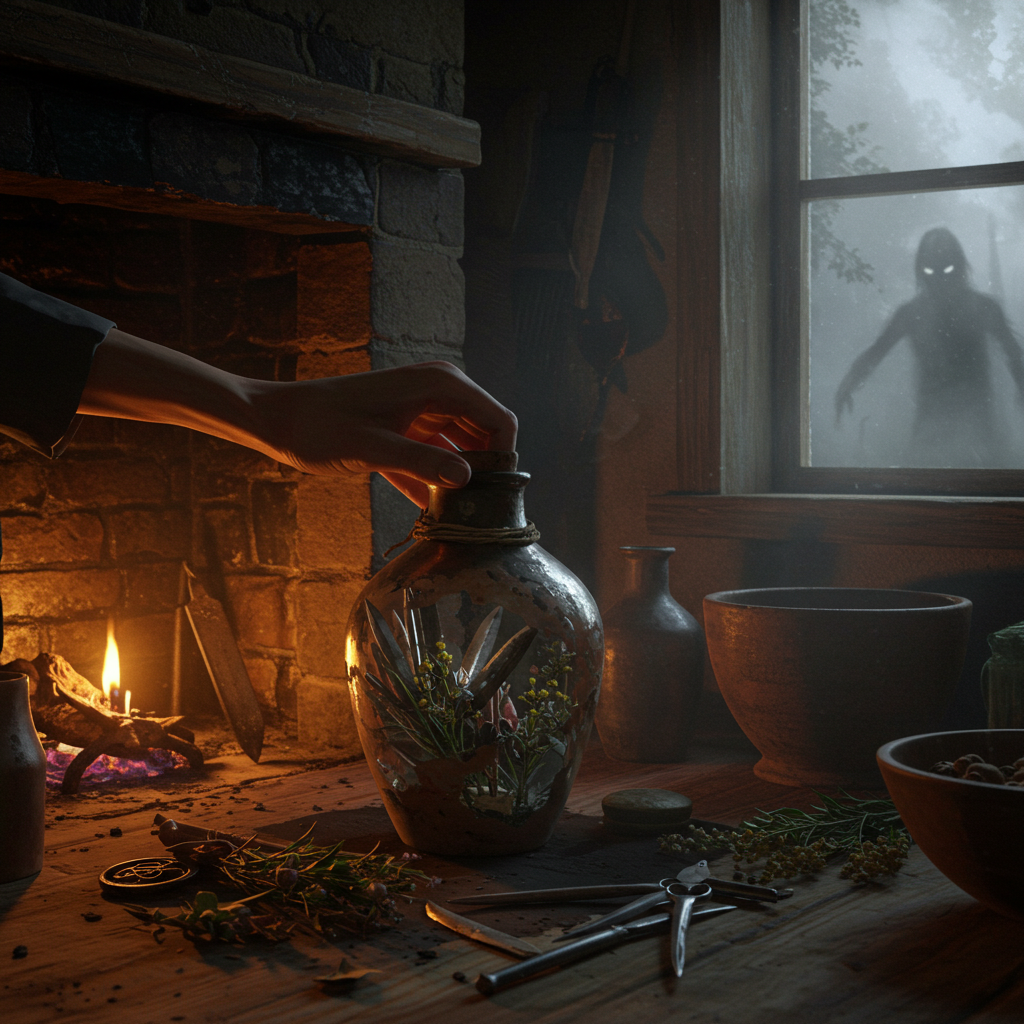According to early modern European folk magic traditions, particularly during the height of witchcraft fear in the 16th to 18th centuries, a witch bottle was a potent household defense tool believed to shield occupants from curses, hexes, or spiritual harm. These protective vessels were crafted by placing specific contents into a bottle—often a salt-glazed stoneware jug or glass container—and concealing it in or around the home.
The most commonly included ingredients were the homeowner’s own bodily materials (especially urine), iron nails, bent pins, or shards of glass to “stab” or “trap” the incoming harmful magic, along with protective herbs like rosemary or rue. Some also included red wine or vinegar as a symbolic solvent or spiritual barrier. Once sealed, the bottle was buried under the hearth, threshold, or other key structural point in the house, or occasionally submerged in a nearby stream or marsh associated with the property. The intention was either to reflect the curse back to its source, confuse or trap the witch, or draw out and neutralize the harmful intent.



